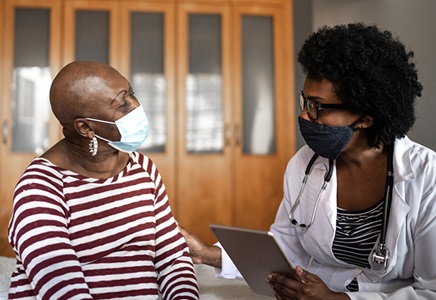How to Remove Pimple Type Bumps on the Back of Your Neck Head
Reconstruction for Head and Neck Cancer
What You Need to Know
Reconstruction for Head and Neck Cancer
- Surgery for head and neck cancer may include removal of structures associated with speaking, swallowing and appearance.
- Reconstruction may include bone, muscle and/or skin transfer along with the associated blood vessels to rebuild areas damaged by cancer and cancer treatment.
- When reconstruction using your own tissue is not possible or desired, custom prosthetics by an anaplastologist — a trained medical artist — may be used.
Head and neck cancers involve critical structures associated with speaking, swallowing and appearance. Removal of part or all of these important structures, including the tongue, upper and lower jawbones, nose, larynx (voice box), salivary glands, and skin of the face and neck, may result in difficulty speaking and swallowing, and disfigurement.
The primary goal of treatment for head and neck cancer is to eliminate the cancer. The goal of reconstruction after head and neck surgery is to return your appearance and function to its original form as much as possible. This is accomplished through a variety of techniques.
Microvascular Reconstruction
During microvascular reconstruction, healthy tissue from other parts of the body is used to re-create the part that was removed or damaged during cancer treatment. This includes removing a combination of muscle, bone and skin, depending on the surgical defect's characteristics, along with the blood vessels that supply the tissue, and transferring the tissue to the damaged area. The harvested tissue is used to reconstruct the area with the surgical defect, and the blood vessels from the tissue are connected to blood vessels in the neck using a microscope. The harvested tissue then helps heal the defect and helps restore form and function.
Types of microvascular reconstruction techniques:
- Free Muscle Transfer — muscle is harvested from the leg, back or stomach, and is used to reconstruct the skull or scalp skin. Muscle and nerves are also used to restore facial movement when tumors have caused facial paralysis.
- Free Skin Transfer — skin, fascia and fat is harvested from the forearm or thigh to reconstruct the tongue, floor of the mouth, cheek, lip, skin and pharynx (swallowing tube) following removal of the voice box.
- Free Bone Transfer — bone acquired from the leg (fibula) or shoulder (scapula) is used to reconstruct defects in the upper (maxilla) and lower (mandible) jawbones. This restores the appearance of the face, and it allows for better swallowing by preventing communication of saliva and food between the mouth and the nose and the neck.
If teeth need to be removed during cancer surgery, state-of-the-art technology is used to provide dental rehabilitation in the form of dental implants. Oral surgeons and prosthodontists work with you so that the dental implants are comfortable and functional.
Anaplastology
Anaplastology is the art of restoring a malformed or missing part of the human body with a prosthesis. An anaplastologist — a trained medical artist — creates custom prosthetic facial parts, including eyes, ears and noses, for head and neck cancer survivors whose original facial features are damaged or missing due to radiation or surgery. The prosthetics, generally made of silicone, are designed to match and blend into the face in form, color and texture. They can be affixed with adhesives or attached magnetically by implanting a bar and magnetic retention plate in the face.

Johns Hopkins Facial Prosthetics Clinic
At Johns Hopkins, certified clinical anaplastologist Juan Garcia, a trained medical artist, directs a program creating custom prosthetic facial parts, including eyes, ears and noses, for head and neck cancer patients whose original facial features may have been damaged or missing due to radiation or surgery.
How to Remove Pimple Type Bumps on the Back of Your Neck Head
Source: https://www.hopkinsmedicine.org/health/treatment-tests-and-therapies/reconstruction-for-head-and-neck-cancer
0 Response to "How to Remove Pimple Type Bumps on the Back of Your Neck Head"
Post a Comment